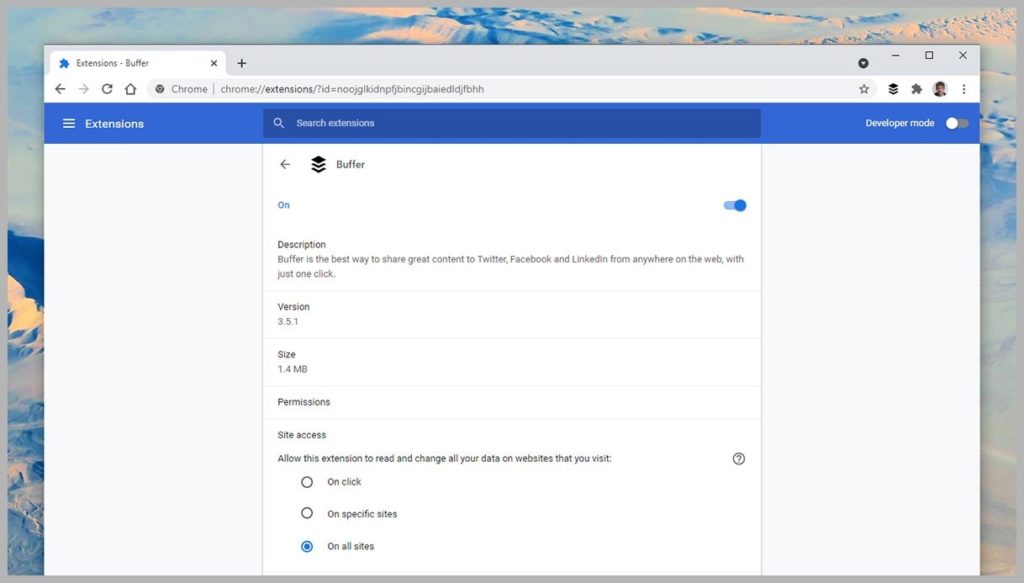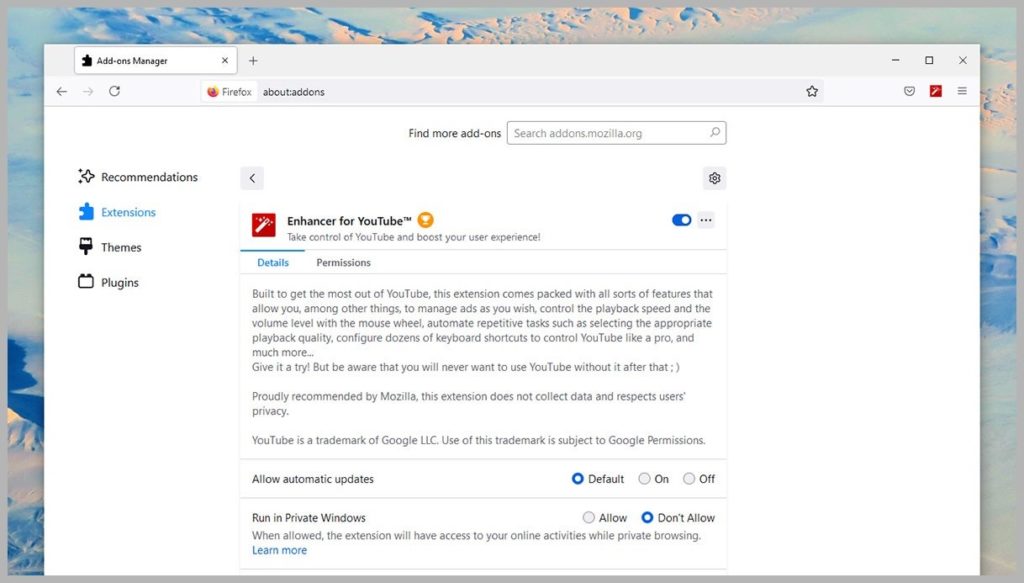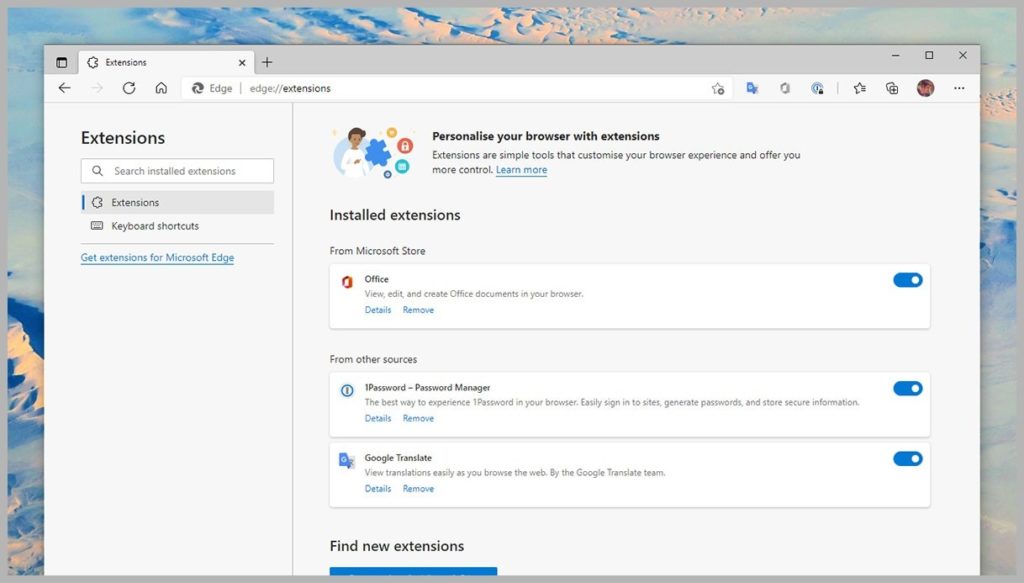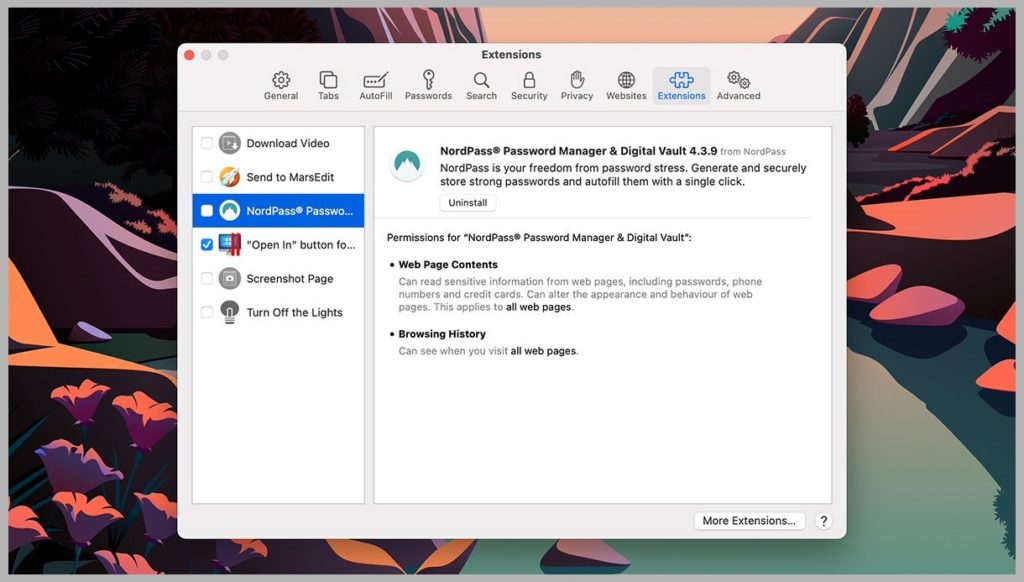Browser Extensions can be hugely useful, plugging gaps in functionality, adding cool new features and options, and generally just making life on the web more convenient.
At the same time, they have the potential to be a serious security risk—many ask to see everything you see online, some change key settings inside your browser, and they can operate and communicate with their developer (or with advertisers or other parties) in the background without your knowledge. We do not want to discourage you from using your favorite extensions, but you should definitely make sure the ones you are using are safe.
First, all the usual rules apply: Keep your computer and its applications up to date. Run regular malware scans. That will go a long way toward minimizing the risk posed by potentially dodgy extensions. Beyond those tips, here is how to run an audit.
How to Spot Threats Early
Identifying a bad browser extension isn’t an exact science, but there are some general pointers to follow. Always do your research before installing an add-on—check the reviews from other users and reviews on the web, if there are any. See when the extension was last updated, as really old and out-of-date tools can be less secure than newer ones, and definitely look for indications that the add-on has changed hands recently.
It is important to make sure that the extensions you install come from official repositories, such as the Chrome Web Store or the Firefox Browser Add-Ons portal. It gives you some degree of certainty that the software you are installing is legitimate and safe, so be a bit warier of extensions that you find elsewhere. Not that all unreviewed add-ons from unknown developers are bad, but you should be extra careful of them—can you find anything out about the company or the person behind the tool?
Is it clear how the extension is being funded, or is it a passion project? What clues can you get from the website linked on the extension listing page, for example? Double-check the permissions that an add-on is asking for. In some cases (Firefox), they will be listed on the extension page on the web; in others (Chrome), you will not see them until you are installing the software. Be on the lookout for any permission requests that seem unreasonable or strange considering what the add-on is supposed to do.
How to Check Chrome Extensions

To see the extensions you have installed in Chrome, click the three dots (top right), then choose More Tools and Extensions. Click Details next to any extension to reveal more information about it, including the browser permissions it needs to run and how much space it takes up on disk.
There’s also a list of websites the extension is allowed to access—this will typically be On all sites, but you can restrict it to On specific sites to limit the add-on to certain pages. To have the extension ask for permission to work its magic every time it needs access to a site, select the On click option.
Extensions that you’re not 100 percent sure about can be temporarily disabled using the toggle switch at the top of its individual settings page. If you want to get rid of an extension completely, select Remove extension and then Remove.
How to Check Firefox Extensions

Fire up Firefox, and click the menu button (three horizontal lines, top right), then Add-ons and Themes and Extensions to get to your extensions. You will see currently installed extensions, plus some recommended ones that Firefox thinks you will like. Click on any extension toggle switch to disable or enable it.
Select an extension to see some details about it, including user reviews, a link to its website, and its developer. From the same screen, you can set whether or not an extension can update itself, and whether or not it can run in private (incognito) windows. Switch to the Permissions tab to see exactly what a Firefox add-on is allowed to do on your system. If you decide an extension has overstayed its welcome, click the three dots to the top right then Remove and Remove again.
How to Check Microsoft Edge Extensions

Microsoft Edge is based on the same code as Google Chrome, so there are some similarities in the process here. Click the three dots in the top right-hand corner of the interface, then Extensions to get to the main list. The toggle switches let you enable and disable extensions without actually removing them—you can get rid of them by clicking Remove and then Remove again. To learn more about an extension you’ve installed, click on Details.
On the Details page, you are able to see the permissions granted to an extension and which sites it has access to (usually all of them, for most extensions). The same page lets you set whether or not an extension can run in Edge’s InPrivate mode.
How to Check Safari Extensions

In Safari on macOS, open the Safari menu and select Preferences, then switch to the Extensions tab. All of your installed add-ons are listed here, and the currently active ones will have a blue tick next to them.
To discover more about a particular extension, click on it—you will be able to see the add-on’s permissions and the sites it is allowed to access, where applicable (most extensions want access to all the sites you visit). You can adjust the sites setting, but you are not able to change the permissions.
If you decide that you are not comfortable with having a particular extension installed, click Uninstall. If the extension is part of a bigger macOS app, you will be directed to Finder to get rid of the application completely.
If you would feel better having a technician do this for you, just give us a call and we will pair you up with one our remote support technicians for further assistance.
Frankenstein Computers has been taking care of our happy clients since 1999. We specialize in affordable IT Support, Cybersecurity Services, IT Services, IT Security, Office 365, Cloud, VOIP Services, SPAM, Wireless, Network Monitoring Services, Custom Gaming PC, MAC repair, Computer Repair In Austin TX, Virus Removal, web design, on site support and much more. Check out what our clients are saying about us on Yelp!
